Sola Olulode: 'Burning, like the star that showed us to our love'.
Sola Olulode on light, love, joy and creating queer spaces through her art in her newest exhibition ‘Burning, like the star that showed us to our love’, on show at Ed Cross Gallery until 16th September 2023.
In my final year of university, I told my supervisors that I wanted to write my final dissertation on joyous black stories, where central narratives were not ones clouded in suffering and tragedy. At first, not only did I struggle to find them, but my supervisors also struggled to think of un-tragic black stories too. It was a wakeup call, but one that led me to discover the Black Joy. I encountered Bolu Babalola’s anthology Love In Colour (2022), for instance, along with @theblackjoyproject Instagram account; the vibrant directorial debut of Raine Allen-Miller, Rye Lane (2023),and Black Joy (2023), a collection of love letters to Black British Culture.
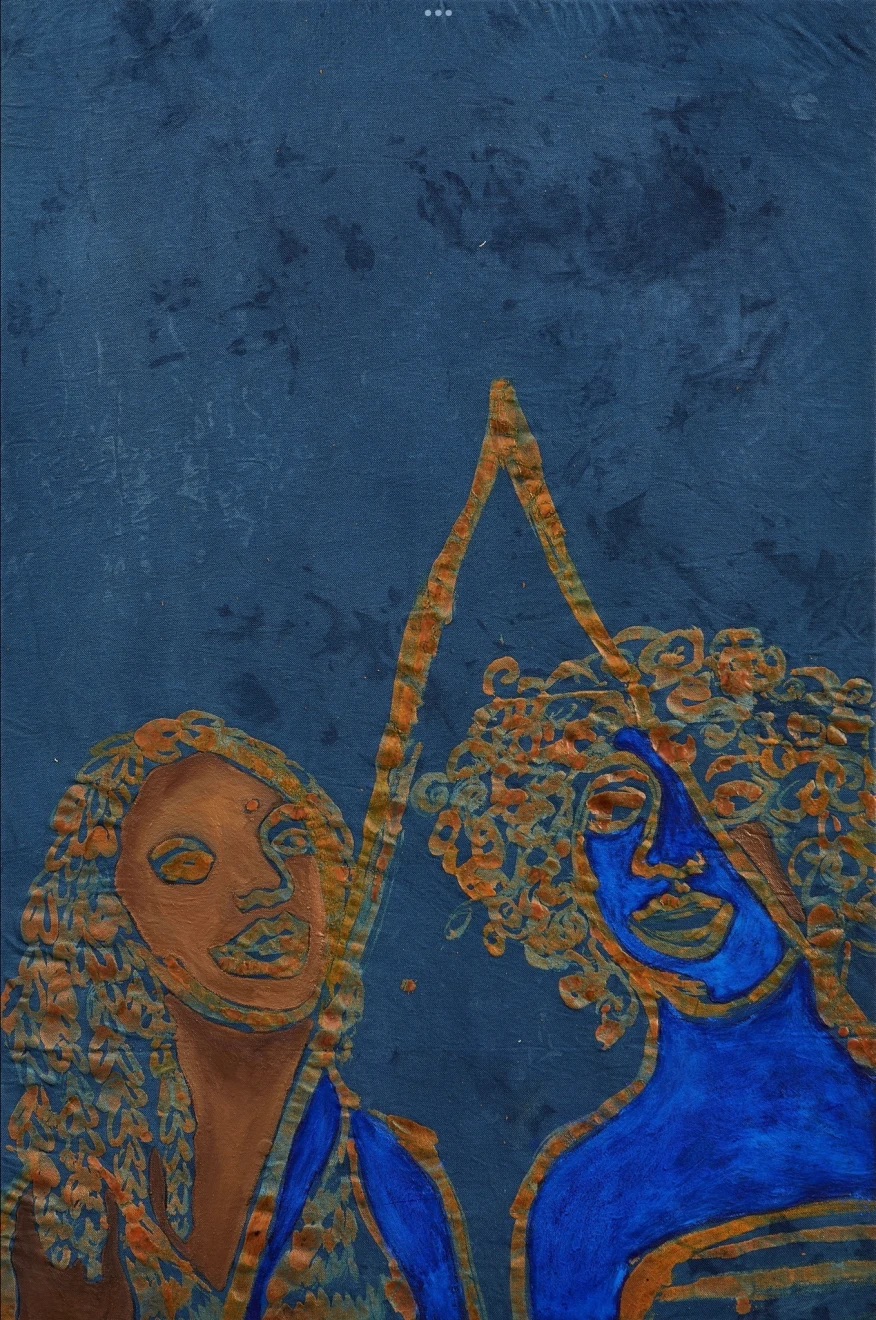

The work of British Nigerian artist Sola Olulode sits proudly in that category of Black Joy, her paintings capturing lightness and love in a way that erupts triumphantly off the canvas and into the spaces that surround her work. Her new exhibition, ‘Burning, like the star that showed us to our love’, is on show at Ed Cross Gallery until 16th September 2023, and sees a departure from the artists signature use of indigo dyes. Highly textured and vibrant yellow canvases burst off the walls of the gallery that have been draped in baby blue dyed fabric. They all depict scenes of a queer black couple falling in love, from the first sparks flying to tender moments of deep romance. As the title ‘Burning, like the star that showed us to our love’ suggests, Olulode is blazing a trail for art that embraces and empowers light, love, joy and creating queer spaces.

(EN) Elise Nwokedi: Your newest exhibition embraces Black Queer love in a way that, unfortunately, is not commonly captured in the media. What drew you to subject?
(SO) Sola Olulode: The stories that we normally see [around black couples] are very much about struggle and pain, and you never get to just be and exist in happiness. I always say that I paint what I want to see, and that is why I paint works like this, because I just want to focus on these really loving moments and tenderness and care and not all the trauma that surrounds life experiences.

EN: How much does the personal blur with fiction with these works?
SO: It's a mix of both. I made a conscious decision to only work with painting black figures and black women and non-binary people just because they are the identities that I come from. I like to paint from what I know and what I see around me. I can only paint what I feel. But I also try to have a little bit of distance in the subject matter, because I never want it to feel autobiographical. So, I base it off things that I may have experienced or things that I witness, for example in films like Moonlight (2016). It comes from a place of longing to experience a love like theirs.
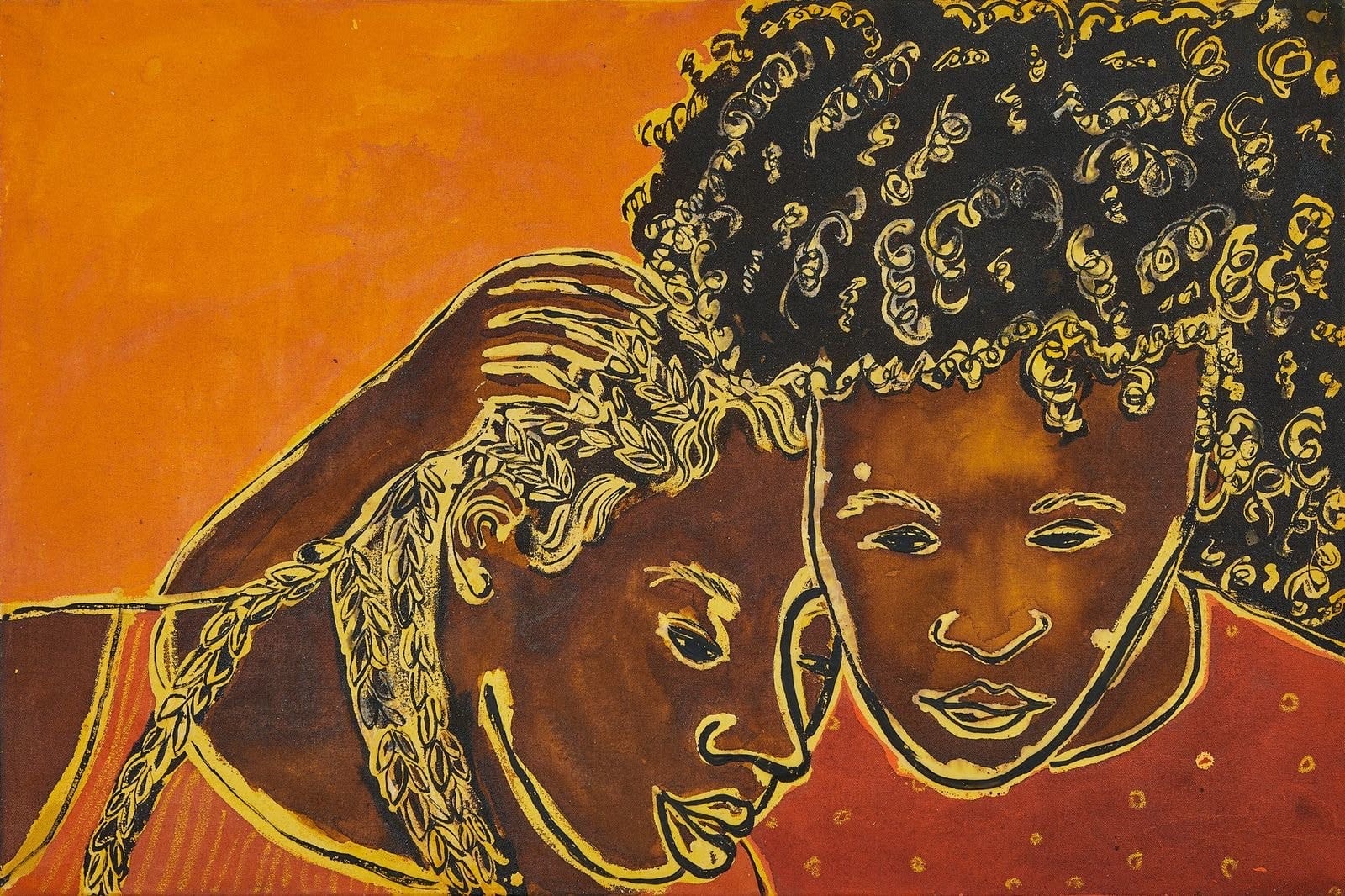
EN: This series is a move away from your work with indigos, and it fully embraces yellow, in its various shades, tones and textures, with the use of batik, wax, acrylic, bubbles and even carving into the paint. What inspired this shift towards yellow?
SO: Yellow feels like joy! I wear a lot of yellow, and when I wear a fully yellow outfit, people always complimented and said how I looked so sunshine-y and summer-y, and I feel like that's the same effect I want people to feel when they look at the paintings.
Yellow was the first colour that I tackled in my move away from blue. I was initially working in the field of natural, strong, vibrant dyes, and I was using turmeric originally to dye the canvas. But turmeric is not a reliable dye… and it faded in sunlight.
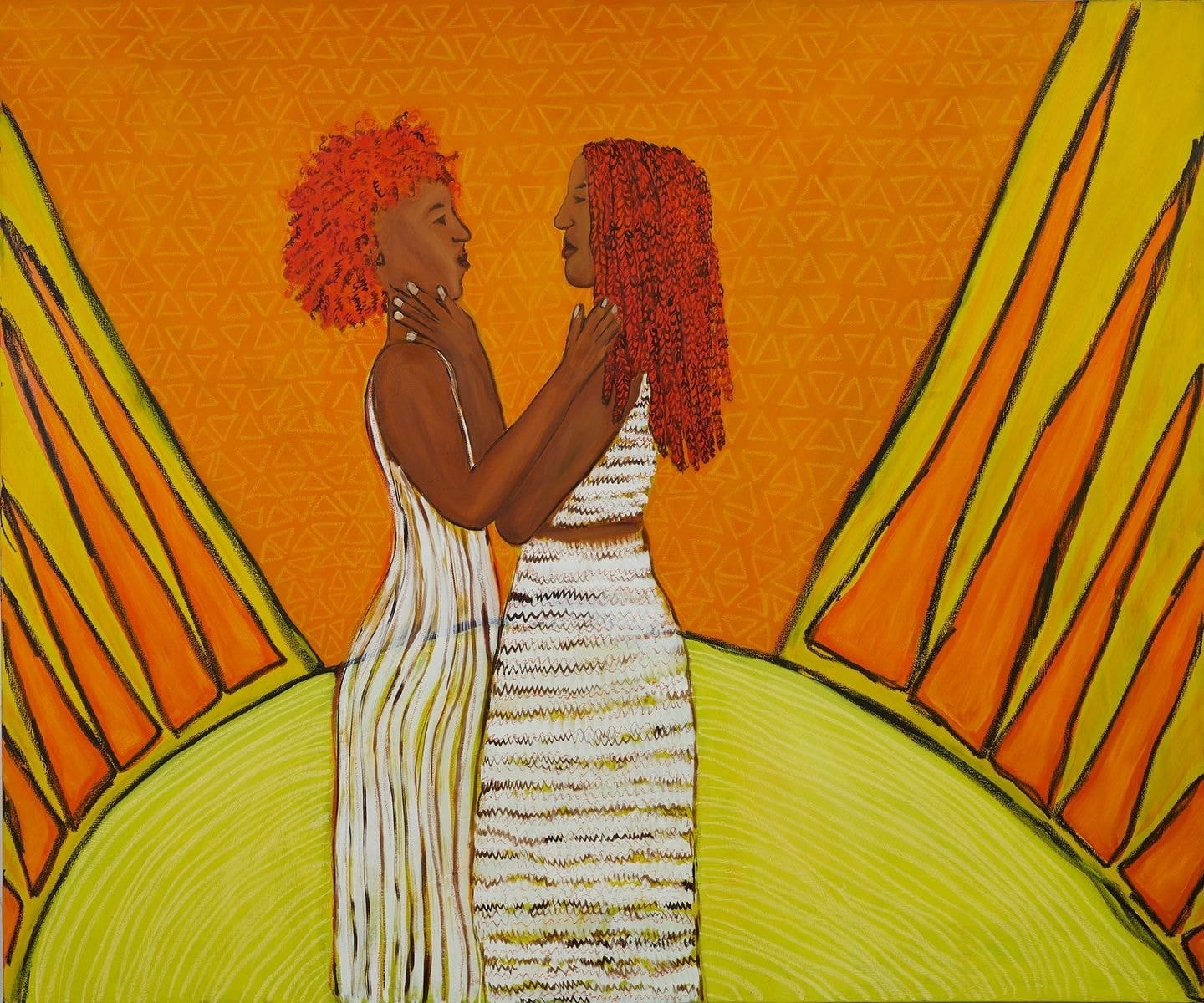
EN: Maybe there’s a metaphor there, with love fading?
SO: I want it to stay! These moments can just be fun. In this present time, existing.
But it's quite funny, because even the subject I chose to focus on was this specific period - the beginnings of a relationship, which is happy, and everything's going well – but I'm not telling the rest of the story.
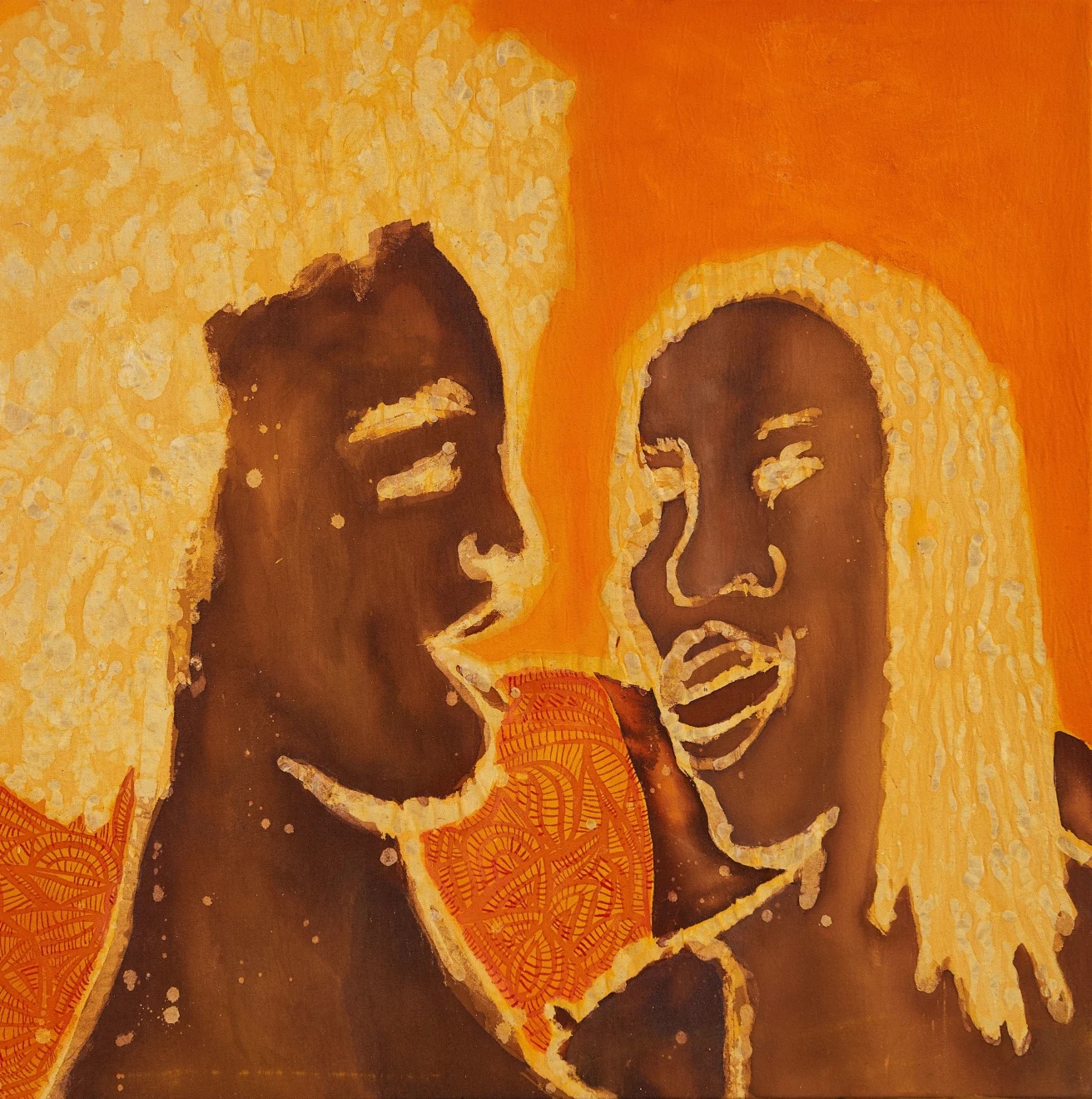
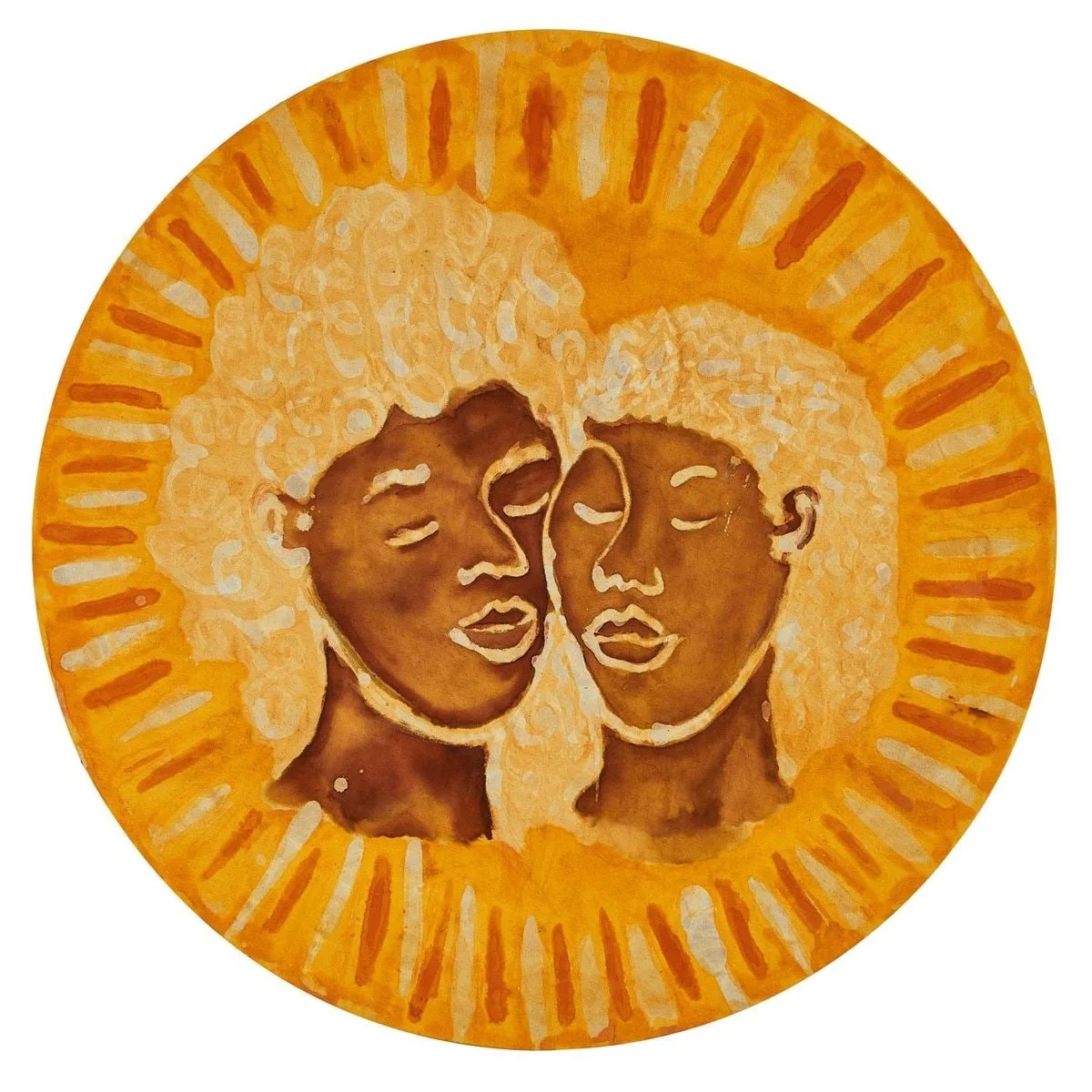
EN: What is the importance of space to you - both in your paintings, and in how they interact with the world around them?
SO: I feel like the couple live in a void space - there's a very minimalist background. And there’s this bubble that they're living in, in love. There's nothing else around them. And then there’s this sun in the background of a lot of the paintings, and it's radiating out to symbolise that intensity, like “It's just like me and you sat here like not paying attention to anything else that's going on around us”.
And I wanted that to be reflected in the gallery space. Galleries can be quite a sterile environment - this traditional white cube. And that's why I dyed the blue fabrics to hang on the walls. The paintings act like different suns against the sky, and the gallery becomes an immersive environment that we step into.
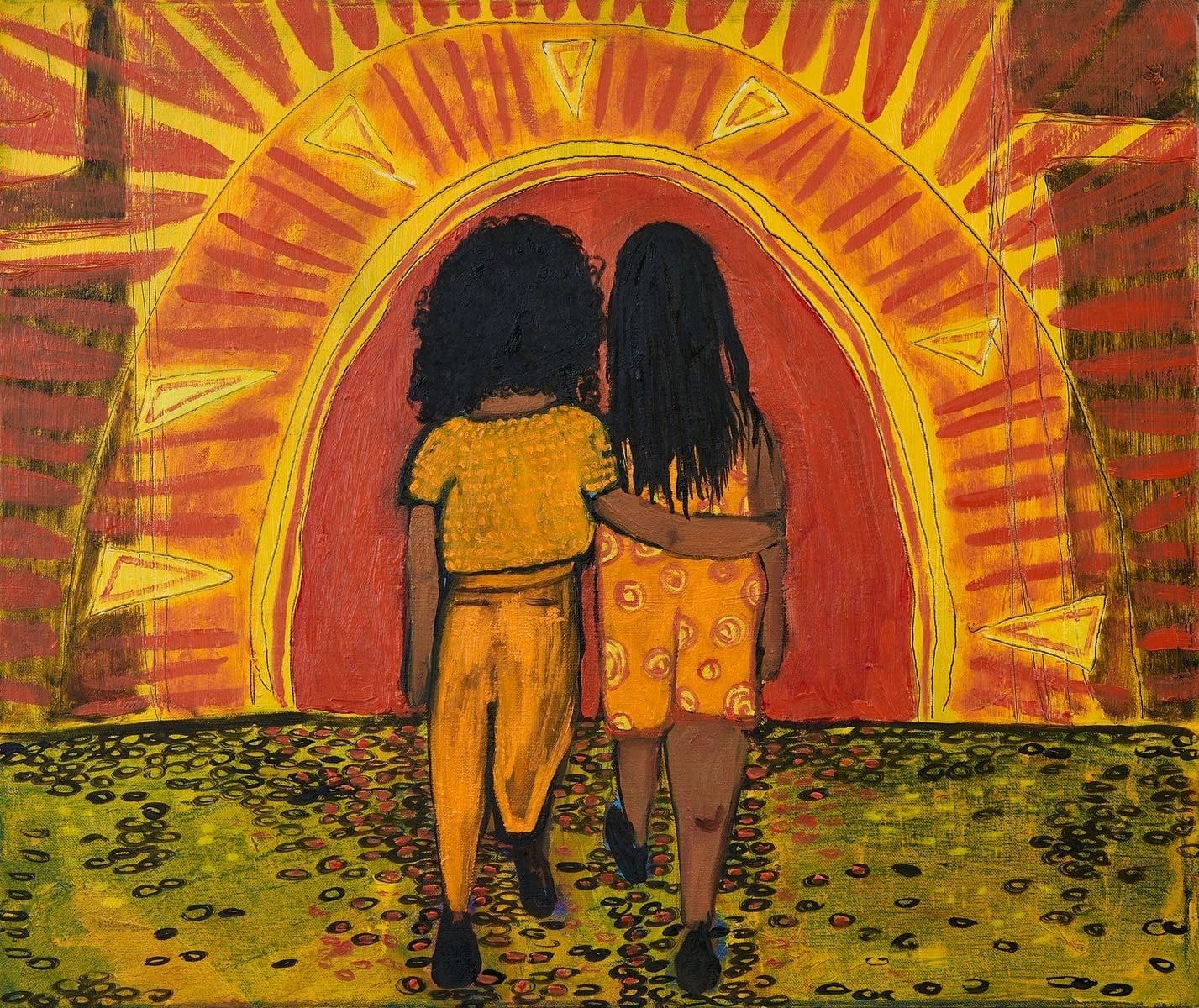
EN: We’re literally basking in the sunlight of the paintings. Light often has that illuminating and guiding factor, but there is also a sense vulnerability when you shine a light on someone. Is that something you were exploring in this exhibition?
SO: I tend to go for more of a celebratory lens, not vulnerable. These relationships exist and are here and need to be documented. And I guess that's why I choose to shine a light on queer relationships and queer spaces. Even though that's what the paintings represent for me, I kind of don't mind if the audience imposes whatever the relationship is, for them. But, yeah, I like to celebrate love.

Sola Olulode’s ‘Burning, like the star that showed us to our love’ is on show at Ed Cross Gallery until 16th September 2023.
By Elise Nwokedi